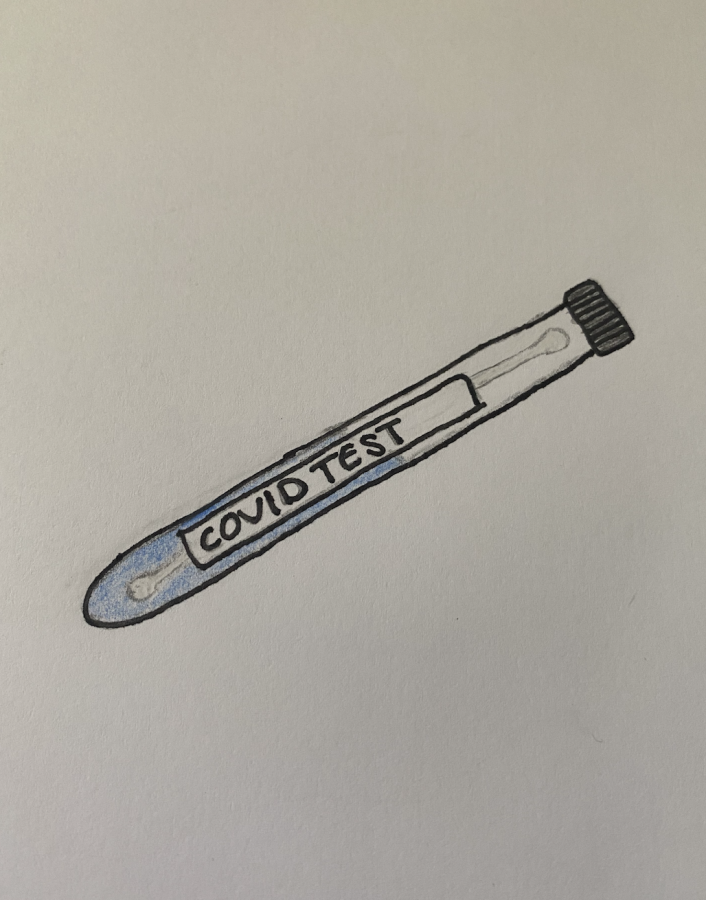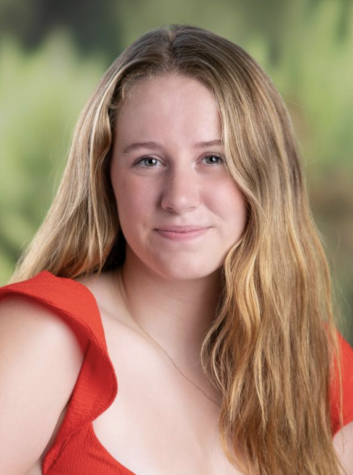On-Campus COVID-19 Testing is a Must-Use Resource
Nasal swabs are placed in test tubes once the test has been administered. At many public COVID-19 testing sites, healthcare professionals administer the test to patients; however, at Menlo’s on-campus testing site, school community members self-administer their tests. Staff illustration: Annie Stent.
February 2, 2021
Menlo’s hybrid learning model resumed Tuesday, Jan. 19, and the school administration requires weekly COVID-19 testing to help ensure the safety of the Menlo community. According to an article from One Medical, testing allows for case finding, contact tracing and guidance for patients, which all benefit public health.
Finding time to get tested regularly can be difficult and inconvenient because of busy, conflicting schedules, so finding a site that is safe, close and effective is important.
Multiple private schools in the Bay Area have testing sites on their campuses. Both Sacred Heart in Atherton and Castilleja School in Palo Alto have on-campus technician swab testing, according to Sacred Heart sophomore Maile Smith and Castilleja sophomore Devin Knuckles. Menlo’s testing program varies slightly from these schools because it is self-administered, meaning that the person being tested performs the test on themselves.
Before Menlo established their COVID-19 testing site in the new Spieker Center for the Arts, the closest testing sites to my house were in Mountain View and Redwood City. Each were about a 20-minute drive, resulting in a 40-minute round-trip plus the actual test administration time.
Comparatively, a drive to Menlo takes me less than 10 minutes. I can get to the testing site and back in less than half the time it took before there was a site at Menlo. In addition, when students and teachers are on campus during hybrid learning, they can just get the test right there.
The Menlo campus test results also tend to come in much faster because they only need to test members of the Menlo community, as opposed to sites that are treating other One Medical clients in the area. According to sophomore Brooke Dombkowski, any time she has been tested at Menlo, her results have taken about two days. Before Menlo established their site, Dombkowski used to get her testing done at One Medical’s San Mateo site, where her results would take three to five days. With Menlo’s site, her experience with testing has been improved because of the quick turn around.
The self swabbing technique does allow more room for error because it is not being done by trained nurses. Nonetheless, self-administered tests are sufficiently accurate, according to a study conducted by Stanford Medicine.
The study involved people who did one self-administered test at home, one self-administered test at a testing site and one technician-administered test at a testing site. “Of the 30 participants, 29 received identical results […] for three samples,” the study concluded.
At Menlo’s testing site, One Medical staff members also provide clear instructions on how to perform the test. Even with the time spent giving these instructions, they are able to get more people tested at once with less staff because of the self-administration technique. For example, I was in the testing building at Menlo for about two minutes, whereas at another site, I sat in line for close to 10 minutes.
Additionally, technicians are able to keep a larger distance from people getting tested, leaving One Medical’s staff safer than if they had to administer the test for everyone who came into the facility. According to the Centers for Disease Control and Prevention, six feet is the acceptable distance for safety. Technicians performing COVID-19 tests cannot stay six feet away from their patients, putting themselves and the client at more risk.
Menlo’s on-campus testing is better than most sites I have experienced due to its convenience, quick turn around and overall safety.
Other schools in the Bay Area would benefit from having testing sites on their campuses for the convenience of their students and staff. The schools that have already allocated a site on their campuses, such as Sacred Heart and Castilleja, should transition to self swab for the safety of their community members and technicians and for the efficiency of the test.



